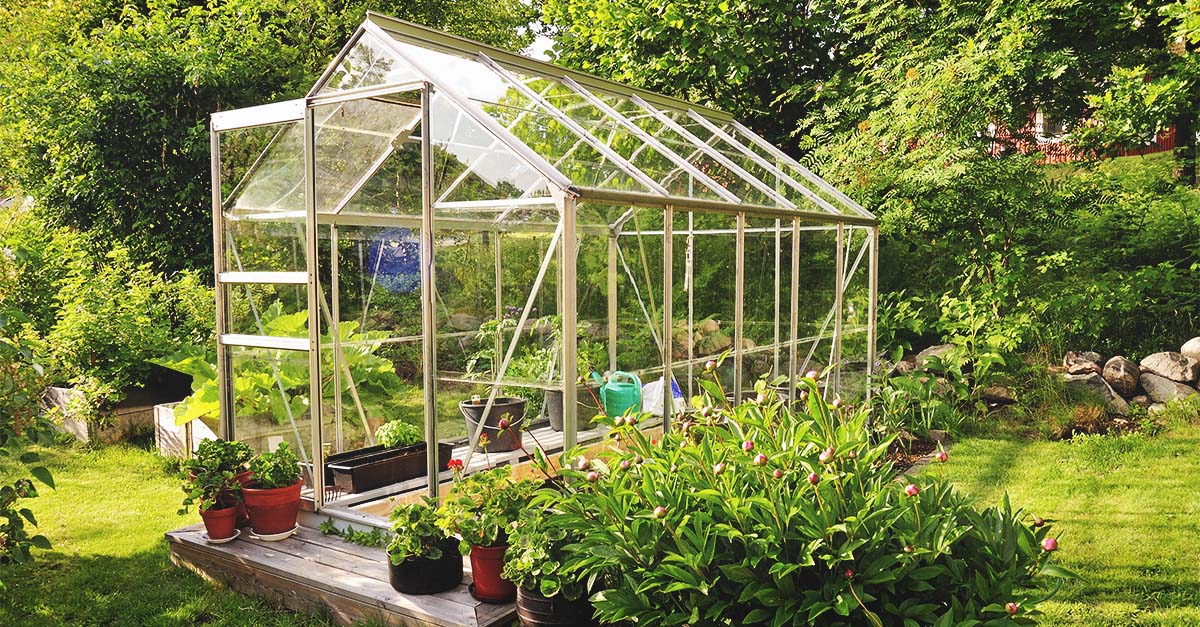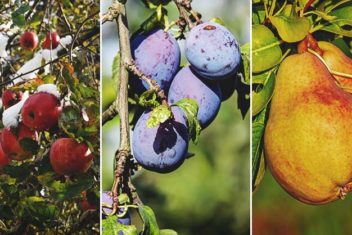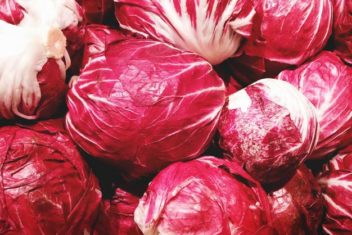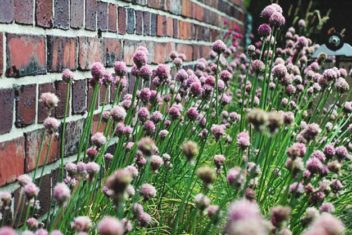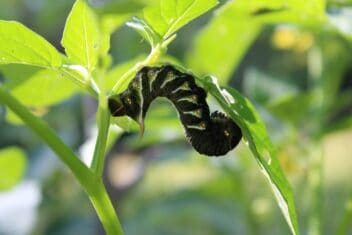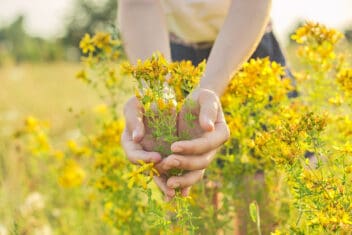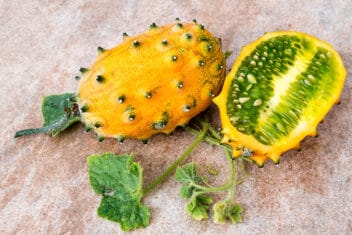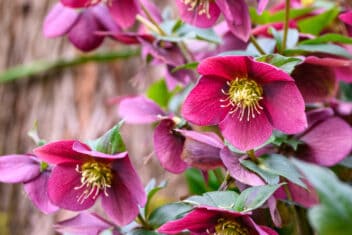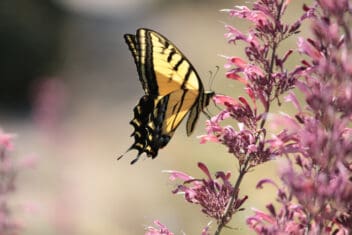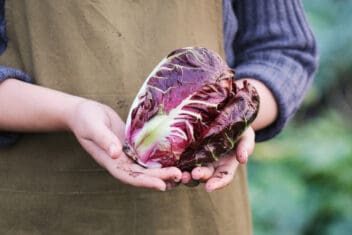If you are considering getting a greenhouse or trying to figure out how to make good use of the one you have, what about using it to create an exotic, edible landscape?
Thinking of a greenhouse as merely a tool to get a jump on growing vegetables outdoors is a very limiting way to look at an extremely versatile extension of your living and gardening space.
A greenhouse, like any other garden space, can be a place of beauty and a way to build your connection to nature. It can also help you to grow perennial foods that might not otherwise grow in your climate.
With good planning, a little investment of time, and smart spending, you can transform your greenhouse into a lovely edible landscape that improves your quality of life and adds to your food supply. You simply need to focus on managing microclimates and designing your greenhouse landscape for your actual conditions.

The Problem with Greenhouses
A greenhouse stops wind and keeps frost from settling on plants. It protects them from torrential rains and snow. Greenhouses also warm exceptionally fast as soon as the sun shines which can make them hot inside even on very cold days.
Unfortunately, greenhouses do not regulate heat consistently all by themselves. In below-freezing temperatures, if the sun is out, they can quickly get above 120ºF and kill plants. Sadly, that daytime heat dissipates as soon as the sun goes down because greenhouses don’t have the thermal mass or high insulative R-value necessary to retain warmth.
I’ve been gardening for a long time. And frankly, I don’t know of any plant that can tolerate the kind of heat and cold swings that would happen in an unregulated greenhouse. So, to be able to grow a year-round exotic edible landscape in a greenhouse, you will need to find ways to modulate the heat and cold to create a comfortable growing zone for plants.
Generating Heat in a Greenhouse
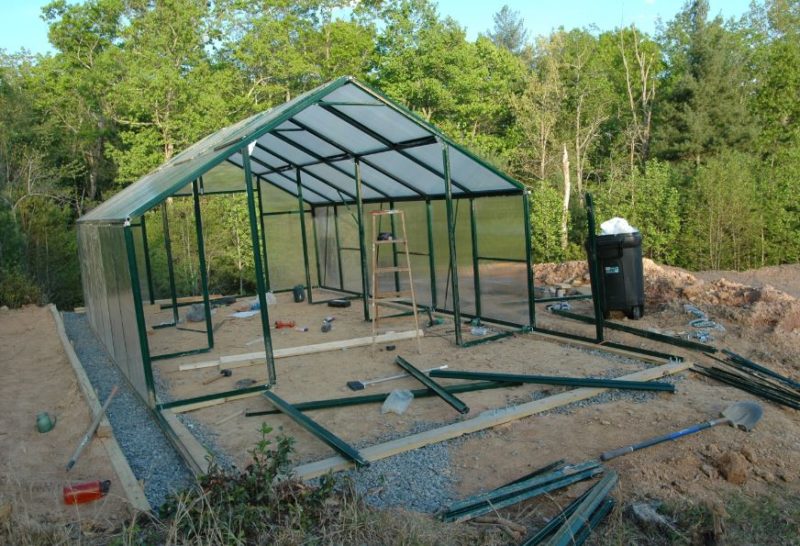
1. Planning Ahead for your Future Greenhouse
If you are just starting your research on greenhouses, then there are a lot of things you can do to provide heat for your greenhouse without relying on fossil fuels. For example, growing in a walipini can be really beneficial in many climates. Also, using geothermal heat or installing a rocket mass stove will work in larger spaces.
Site location and construction materials also have a big impact on climate control in a greenhouse. Things like stone or concrete knee walls and choosing more insulative paneling will help. Integrating with your house, so that your house becomes a heat sink, can also be effective with good design.
2. Install a Heater
The easiest way to add and regulate heat in your existing greenhouse is to install a heater that runs on a thermostat. Costs to buy and operate the unit will depend on the size of your greenhouse and whether you will use an electric, gas, propane, or paraffin heater.
Honestly though, because greenhouses are so prone to lose heat quickly at night, running those units can be a nightmare for your energy bill. But you can cut your costs tremendously by also using other passive heat-absorbing or generating features to preserve the heat generated.
3. Water Sinks Captures Heat
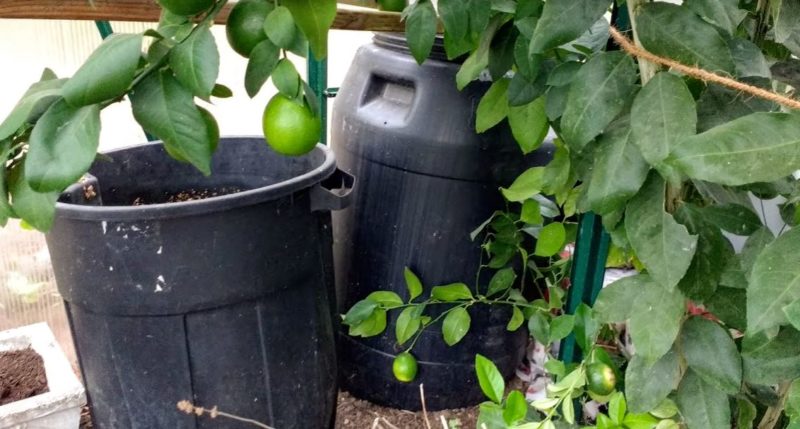
Adding black barrels full of water is usually the cheapest way to store all that daytime generated heat for nighttime use. The black color amplifies the sun’s rays making the water in the barrels heat up. When the sun goes down the cool air temperatures cause the barrels to release the warmth they captured during the day back out into the greenhouse.
Putting these on the north side of your greenhouse and wherever you need extra insulation, will enhance their utility. Also, using them near less cold-hardy plants will give them a few extra degrees of protection against the cold.
4. Make your ACT in the Greenhouse
If you make actively aerated compost tea (ACT), that pump also generates a lot of heat. So, by making ACT in your greenhouse, you not only add heat, you have compost tea to nourish your plants through the more stressful months of colder weather and reduced sunlight.
5. Add Aquaponics
Aquaponic systems also have heat-generating pumps and offer another water sink to hold heat. Incorporating an aesthetically pleasing aquaponic system into your design plan can offer access to more food harvests and assist with climate control.
6. Strategic Composting & Hotbeds
Compost piles generate a lot of heat — if they are large enough and built all at once. You can harness that power in your greenhouse by saving your composting materials and building piles with the right carbon to nitrogen materials inside your greenhouse during your coldest months.
Alternatively, you can create a patchwork of hotbeds adjacent to your perennial planting areas to disperse heat through the soil.
7. Add Other Heat Holders
Using mulch, adding large stones, and filling empty areas with potted plants will also trap heat and protect plant roots during cold times. Lining greenhouses with raised beds made of stone or dark painted concrete blocks are both attractive and insulative too.
Cooling Down a Greenhouse
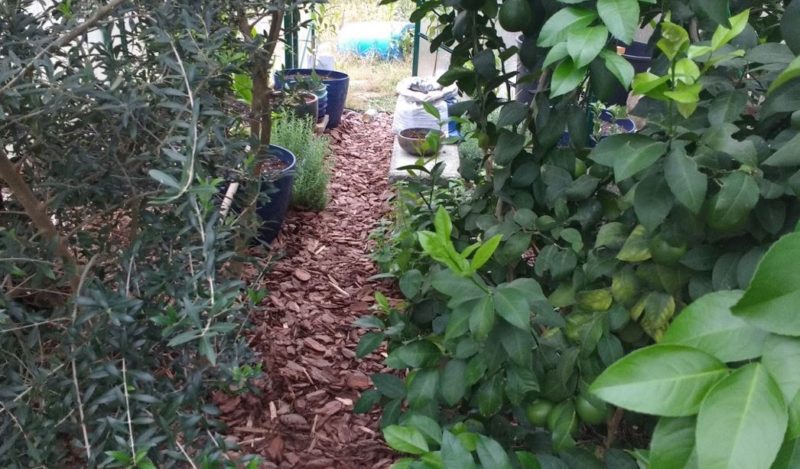
Similar to planning for heating, you’ll want to think about how you’ll cool your greenhouse during hot periods. Situating your greenhouse so that your doors and windows are angled to catch a breeze is important.
The biggest mistake I made in my greenhouse installation was not planning ahead for how I’d handle the sunny day heat generated in that space. Luckily, retrofitting a greenhouse to be cool when needed is also possible.
A well-placed trellis or installed shade cloths can be used to give plants a heat reprieve. Installing geothermal cooling that draws cool air from the soil into your greenhouse on hot days is also an option in some locations.
1. Automated Openers
Opening doors and windows before your greenhouse get hot is critical to controlling heat during the day. You can use automatic window openers that have a wax core that expands as they heat to inexpensively open windows. You can use electric door openers if opening windows is not sufficient.
2. Good Airflow
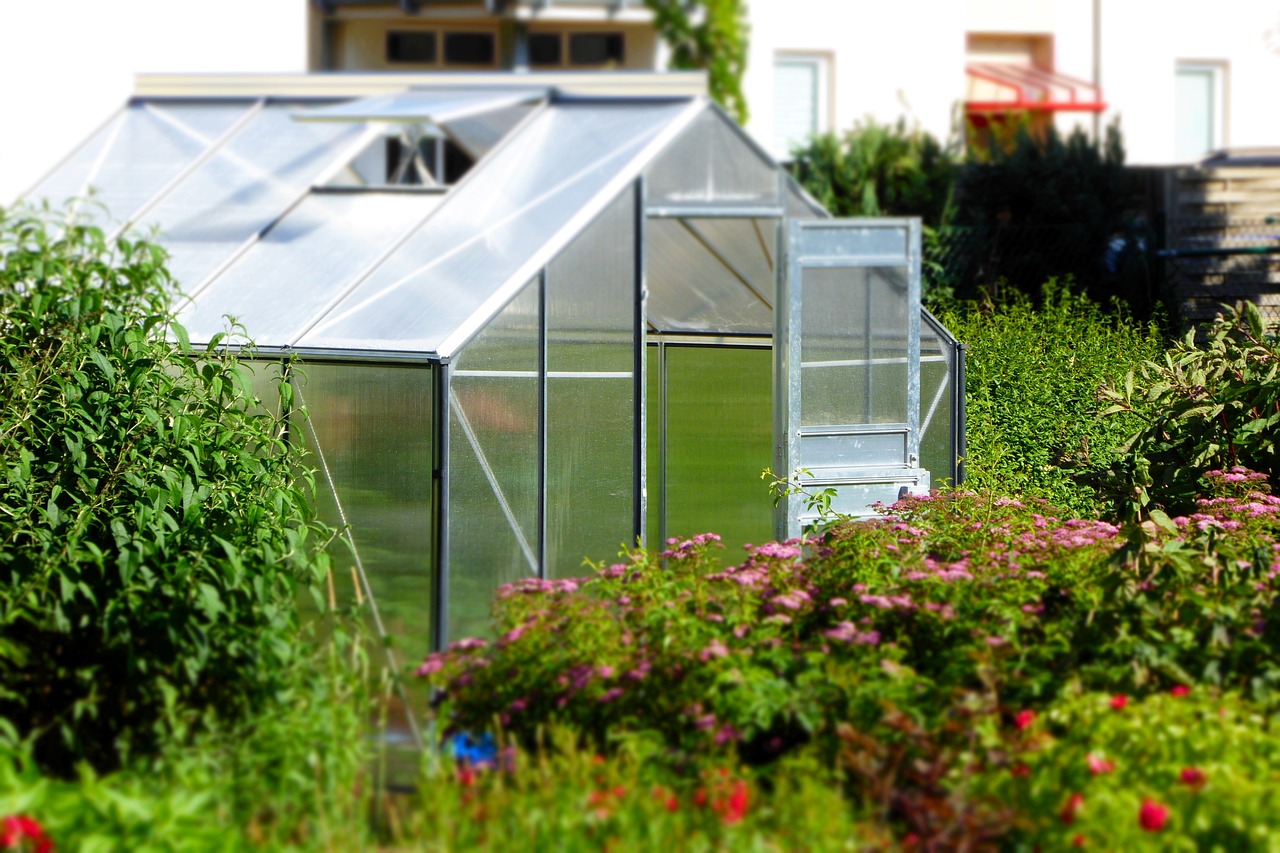
You can add electric fans to bring cool air in or force hot air out. You can also put in ventilation fans similar to what you use in a bathroom to draw heat up and out more quickly.
3. Passive Cooling
Automatic anything can get expensive. So similar to using barrels of water to hold heat, there are things you can do to keep your greenhouse naturally cool.
Creating strategic shade using plants that tolerate heat can be less costly. A well-placed lemon or olive tree can be used to protect more heat-sensitive plants. Shade cloth can achieve similar results.
Plants also need light to grow. So, you need to do a little observation to understand the trajectory of the sun at various times of the year and plan your shade properly. But once you do, then placing a heat-tolerant plant or a patch of shade cloth at the right angle to protect less heat-hardy plants during peak heat can be beneficial.
4. Self-Watering Devices
Keeping soil moist is also key to plant comfort in extreme heat. Using clay pots like ollas or automated self-watering systems set for the height of heat is a bit like offering air conditioning at the worst time of day.
Learn Your Conditions

Once you have implemented all the strategies to regulate temperatures in your greenhouse, then its time to find out your highs, lows, and averages in temperature.
It is really important to know what you are up against for the hottest day in summer and the coldest day in winter to be able to do your planning. You also want to have a good sense of what your climate averages will be so you can select plants that work well in those conditions.
1. Practice Before You Plant
As such, you may want to spend 6 months to a year growing mostly annuals at the outset before you make your edible landscape plan. That gives you practice gardening in your newly created greenhouse conditions. It also offers you a chance to make adjustments before you put perennial plants in place.
2. Use Indicator Plants
Personally, I grew a bunch of baby vegetables like baby lettuce, beets, turnips, and various greens. That way I got a good yield from the space with limited risk for loss since those plants grow fast.
I also grew indicator plants such as basil and cabbage. Basil can’t take the cold so if it shows signs of stress you know you need to warm things up.
Cabbage can’t take the heat so if it starts to bolt, then you know you aren’t regulating your daytime heat well enough.
Planning an Exotic Edible Landscape in your Greenhouse
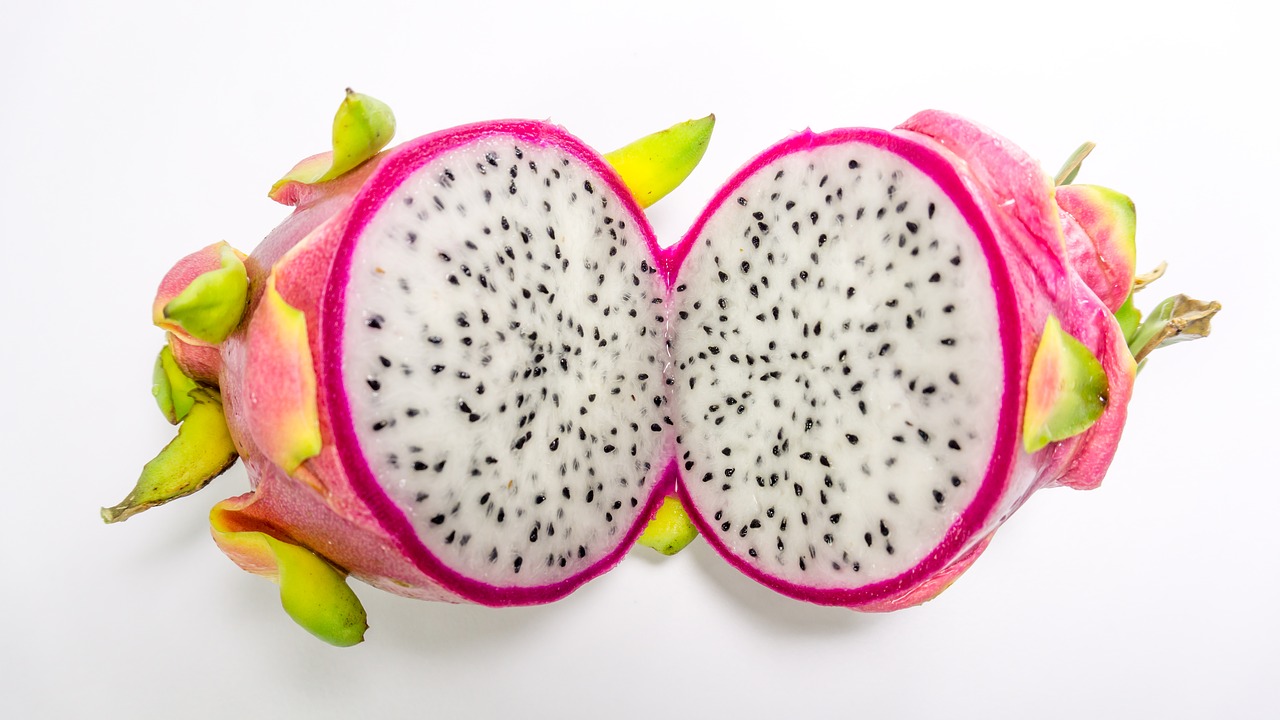
Now, with all that groundwork behind you, the next step is to plan what to plant in your exotic edible landscape. Similar to planning an outdoor edible landscape, you need to take into account the space that you have to work with and your soil type.
1. Check your Soil Status
If you will be planting in pots, then you have complete control over the soil you offer your plants. You can just buy or make mixes that will produce the right pH and fertility rates for what you want to grow.
If you are going to plant in the ground, then you need to factor in your existing soil conditions. You will likely need to add compost, fertilizer, and adjust your pH as necessary to support the plants you want to grow. Or, you’ll need to pick plants that prefer the soil type and quality you already have.
2. What is your Available Space?
Greenhouses come in all sorts of sizes. My space is 12 feet wide by 32 feet long which is 384 square feet of edible landscaping space. That’s similar to landscaping directly in front of a house and it gave me room for several dwarf trees, shrubs, vines, and lots of other stuff.
3. How to Expand your Soil Area
Even with a smaller space such as 6 x 8 feet, you can still fit in quite a few perennial plants as long as you work in a mix of planting beds and free-standing containers to expand your soil area. Think vertically as well as horizontally.
For example, a dwarf tree might need a soil root area several feet wide. That could eat up most of your greenhouse space. However, by placing deep pots on top of that soil area, you can plant several other larger sized plants in the same space without having them compete for soil access.
4. Some Space Limiting Factors
Plant taller plants furthest from the path of the sun and shorter plants in front to ensure they all get good sun access. Make sure you have places to step so you can access all of your plants without damaging them. Plus, keep in mind your ceiling height.
Finally – Selecting your Exotic Plants
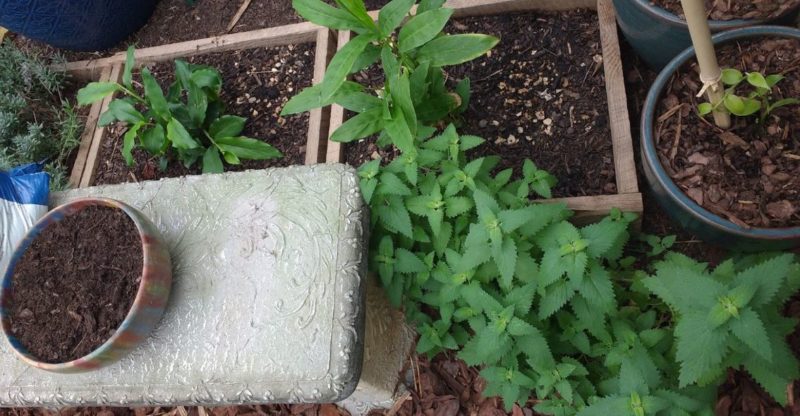
Now for the fun part, a well-planned greenhouse offers you the opportunity to grow things you simply can’t grow outdoors in your climate. I can’t tell you exactly what to plant because that will depend on all the choices you made in planning or retrofitting your greenhouse. However, there are some basic things to keep in mind with greenhouse plant selection.
1. Temperature Limits
All plants have upper and lower temperature limits for plant viability. Make sure you choose plants that will survive the lows and highs you measured in your greenhouse.
2. Find the Sweet Spot
Plants also have a sweet spot or the range of temperatures where they will grow best. Try to match the plants you choose to the average range you have been able to achieve in your greenhouse.
3. Monitor the Humidity
Some like it humid. Others like it dry.
Greenhouses can be quite humid. Locations near the doors can be drier. But in general, choosing plants that can tolerate some humidity is a good idea.
4. Pollinating Plants
Greenhouses don’t tend to have as many natural pollinators as outdoor gardens. Choose plants that either don’t depend on flowering (e.g. rhizomes) or have self-pollinating male and female parts in each flower. Or select plants that have defined flowering periods so that you only have to worry about hand-pollinating for a few weeks, not year-round.
5. Care Levels
If you make your greenhouse a beautiful and climate-comfortable place where you want to spend time, then taking care of plants is a pleasure, not a hardship.
Still, if you are short on time, pick plants that need minimal care. Or, automate care for finicky plants such as adding irrigation to your design plan.
6. Design Details
I believe every garden should have a place to sit and some decorative details that make it feel like home.
Don’t be afraid to add personal touches that appeal to you. Even in a small greenhouse a narrow bench or folding chairs can be used to make the space accommodating for you too!
My Greenhouse Inspiration
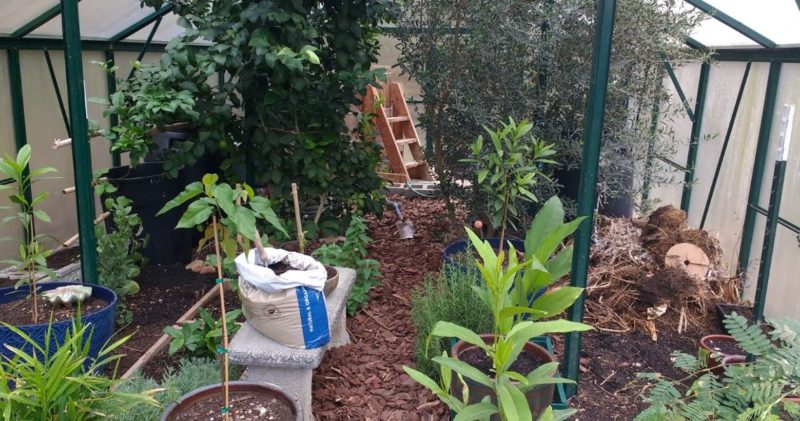
As I said, I can’t tell you exactly what to grow. But I can tell you what I am growing in my greenhouse. I am gardening in Zone 7a. We get a fair number of nights close to 10ºF each year. Mostly though, our winter nights are at or above freezing.
Using many of the techniques detailed previously, and a wood-fired hot tub installed in our greenhouse as a heat source (and fun thing to use), I keep my greenhouse between 45-85ºF year-round. I keep it a little hotter in winter near my tender plants using compost piles and heater placement.
Here’s an alphabetical listing of what’s in my exotic, edible landscape in the ground and in a collection of various sized pots.
Allspice, Annato, Arbequina Olive, Artichokes, Ashitaba, Bay Laurel, Black Pepper, Cardamom, Catnip, Celery, Cinnamon, Coffee, Duckweed, Galangal, Ginger, Lavender, Lemon Grass, Meyer Lemon, Mint, Patchouli, Rosemary, Tamarind, Tea, Vanilla, Wasabi, a revolving range of shade-tolerant summer and winter greens, and I’ll be adding more plants — as soon as I can afford them!
Plus, I still have room to start seeds in spring and propagate plants from cuttings to support my outdoor gardening activities.
Conclusion
Greenhouse gardening isn’t just about season extension — it’s a whole different way to think about gardening. It took me several years to figure out how to effectively utilize our homestead greenhouse for food and plant production. But, now that I have, I can’t imagine not growing all this exotic food in a space I used to reserve for seed starting and winter vegetables.
I hope you’ll consider thinking beyond basic season extension and grow your own exotic edible landscape to enjoy year-round.
